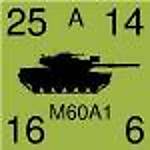IMHO, you can rest assured of getting very consistent and great-looking wire grab handles by using any of several suggested tools and routes. It's not hard to actually make them, and no refined or specialized tool is at all necessary. And they will actually look as much or more like a "machine-made handle" than almost any AM bit.
But maybe there's some other point(s) worth considering in what should have been a pretty gentle and non-caustic discussion...
1) ANY handle which is represented on a kit by some molded-on ridge is going to look vastly better when replaced with a piece of formed wire - regardless of exactly how close to true "scale" the wire gauge being used is, or whether the wire bit is exactly as long as the removed ridge, or whether the wire handle stands a little "high" or "low" compared to the height of the removed ridge, or whether the bends are exactly like scale versions of the real thing as seen in a photograph.
2) Consistency in handle length, bends, or height is actually only relevant when you have multiples of the same handle on a build, AND they are installed such that one can closely compare "neighboring" handles to possibly detect some variation among or between them. In my experience, most of the handles I have replaced have been singular items which are not closely adjacent to other like-sized handles. There is ONE safety grab-bar on the dash of a Horch 901, for instance.
3) Short of actually learning in detail about the exact pipe or rod-gauge, length, bend-arcs and relief-height of the real handle you seek to model, and then carefully calculating and measuring out and faithfully applying these details at your chosen scale... ALL the discussion about how "accurate" your model handles are is, to say the least, an empty and moot point. And NO, I wouldn't begin to count on any dimension of any molded-on ridge on a kit-part as being a reliable reference for anything - save MAYBE for there likely having been a handle there somewhere in or on the real thing.
4) Regardless of how close to the real thing your model handle really is, NOBODY will be able to recognize that when viewing your accurate-to-scale handle. Viewers WILL see if it's straight and level, if it looks cleanly done with the same bend at either end, and if it looks pretty much like other replaced handles on the build. NOBODY arrives with a micrometer to actually measure and compare your effort to some putative real thing. So, if it pleases YOU, you have likely accomplished your realistic goals.
In my opinion; Those who like more and specialized tools and feel better able to make nice handles with a specialized handle-tool should get one. Those who feel good about using their dad's battered old needle-nose pliers (myself) or any other opportunistic tool should do that. Those who are curious about tools and routes they haven't actually used before should avail themselves and explore new ground and continue to be what I believe we actually all ARE - Life-time LEARNERS!
What I sincerely HOPE everyone does is strongly and consistently AVOID, like you would "the plague", loudly and publicly claiming that your particular handles are the "MOST ACCURATE and BEST scale grab handles ever made, AND everyone else's are some sort of plaebian, "off", amateurish bit." This is a hobby, friends, and we should, I think, freely accept that each of us does it as we see fit and to the best of our abilities for our own goals.
Cheers! Bob






























